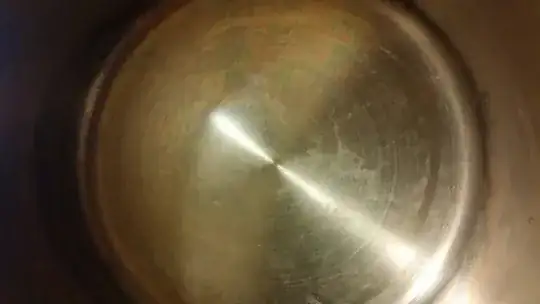If Your Sauce Pan is Stainless Steel
All grades of stainless steels are iron-based alloys with significant percentages of chromium. Typically, stainless steels contain less than 30% chromium and more than 50% iron. Their stainless characteristics stem from the formation of an invisible, adherent, protective and self-healing chromium-rich oxide (Cr2O3) surface film. While stainless steels are resistant to rusting at room temperatures, they're prone to discoloration by oxidation at elevated temperatures due to the presence of chromium and other alloying elements such as titanium and molybdenum.
Factors that contribute to increased oxidation include high dew points, high oxygen and oxides of lead, boron and nitrides on the surface. For bright stainless steels, process them in a highly reducing atmosphere with a dew point lower than –40oF and a minimum of 25% hydrogen.
How to treat Heat Stains
A quick dip in an HCl solution followed by a thorough rinse should remove the oxide "stain", providing it only has a slight "heat" discoloration.
Hard Water Stains
Hard water stains. These result on metal surfaces like sinks and faucets and come about when those areas have been exposed to a large amount of affected water. Read on for some tips on removing hard water stains from metal surfaces in your home.
